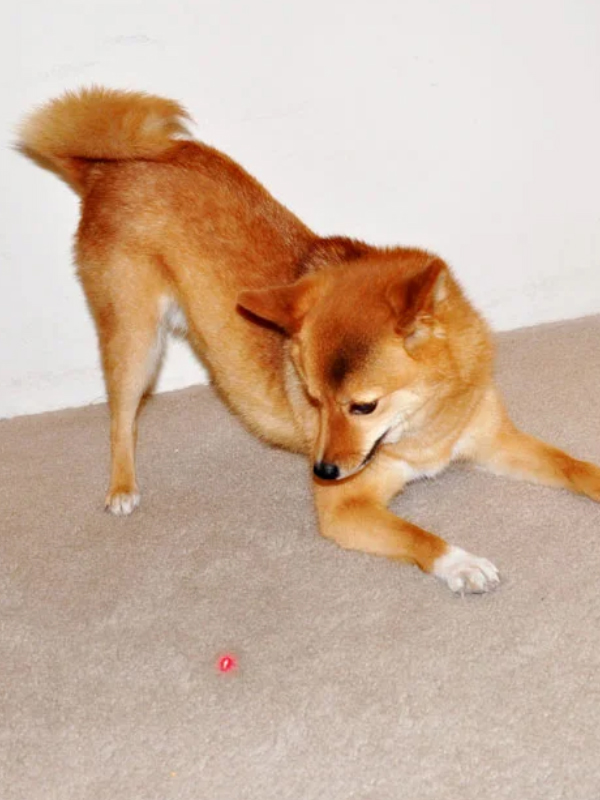
Laser pointers are sold as a "fun" and “easy” way to exercise your pet and may be found on the shelves of your local pet store. They're little, appear to be harmless, and are very cheap. So, what could possibly go wrong?
Even though laser pointers may appear to be an excellent way to exercise your dog at first, they unfortunately have the potential to produce major issues for your dog’s overall wellbeing. The fact that your dog will never be able to actually "catch" the red dot can prove to be extremely frustrating for the poor pup and can create unwanted future behaviors.
New research from behaviorists, trainers, and veterinarians has found a strong link between behavior disorders in dogs who have been exposed to laser pointers on a regular basis.
Lasers can cause more harm than good because your dog never has the satisfaction of getting a hold of the elusive light beam. Imagine the frustration of playing a game that you can never win!
When you utilize a laser to exercise your dog, they may develop an intense obsession with all lights, reflections, and shadows. Consider your phone's reflection, the light reflected off a passing automobile, and the shadow of your two-year-old wandering by the coffee table. The distractions are endless.
In fact, the constant search for this red dot might become neurotic or compulsive, putting your dog on high alert at all times. This obsession is called Laser Pointer Syndrome (LPS) and is a condition caused by the repeated use of a laser pointer.
Laser Pointer Syndrome (LPS) is an OCD-like disorder characterized by the obsessive chase of reflections, lights, and shadows. Laser pointer use causes this behavior because the dogs are frustrated, anxious, and confused by the inaccessible red dot. It puts the dog in a constant prey drive state because they never are able to catch the stimulus. It can even result in injury if the dog is so preoccupied with pursuing a light that it ignores potentially dangerous circumstances such as a busy street or a closed sliding glass door.
High-energy dogs are most likely to develop this condition. In severe cases it can cause them to be so overfocused on following lights that they actually ignore fundamental necessities like food, water, play and rest.
To summarize, Laser Pointer Syndrome develops as a result of your dog's inability to "catch" the elusive red dot through play because it is intangible. There is no touch, smell, or taste. The laser's movement essentially triggers your dog's prey drive, but there's never a true sensation of rest from the chase. With visual stimulants like light, shadows, and reflections, this lack of relaxation can lead to behavior problems or compulsive tendencies.
The best type of exercise for your dog doesn’t require a toy or a game. Simply taking your dog on a walk, jog or hike is the most effective way to physically and mentally exercise your dog. It provides natural stimulation and is great for high-energy dogs. Plus, it can be a great way to get exercise and distress yourself!
If you do wish to include a toy in playtime, make sure it is something tangible such as a frisbee or ball. This will allow the dog to build confidence because they are able to succeed in catching the toy and bringing it back to you.